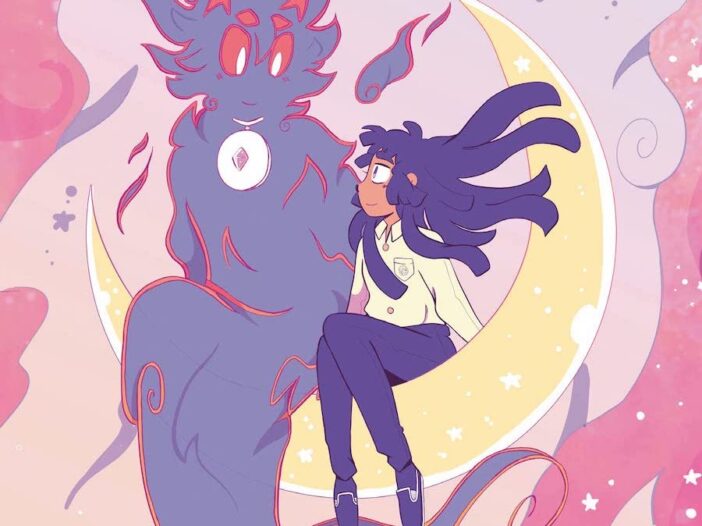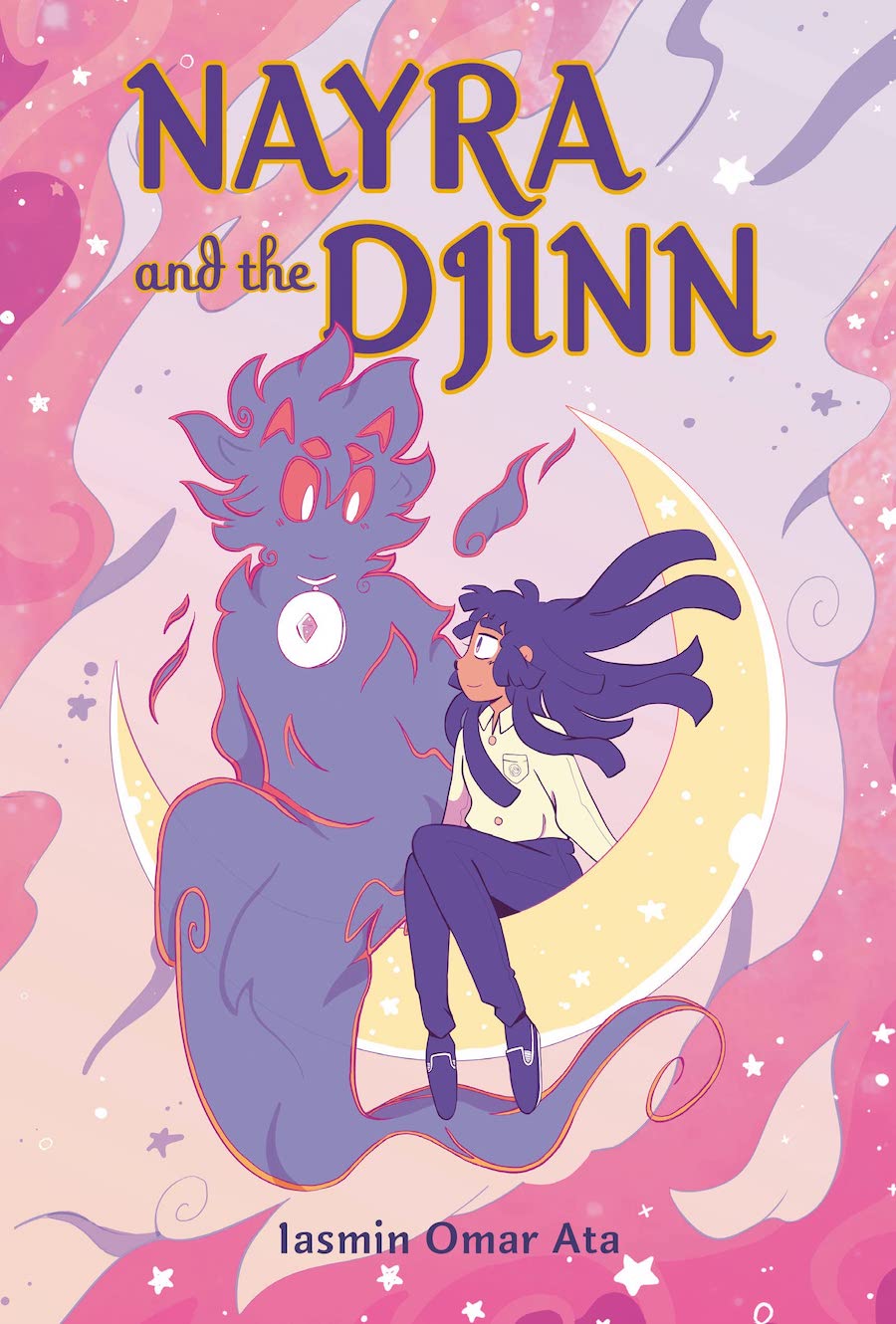
Nayra and the Djinn | Review

Nayra and the Djinn
Writer/artist: Iasmin Omar Ata
Viking
Gr 5 Up
Nayra Mansour, the Nayra in Iasmin Omar Ata’s new graphic novel Nayra and the Djinn, has been having a tough time of it at school lately. Her strict parents pressure her about doing well, constantly comparing her to her successful older siblings. She’s relentlessly bullied by some of her classmates, who insist on calling her “Baba Ganoush.” She’s got a best friend in Rami, the only other Muslim girl in school, but lately it seems like Rami’s demands on her, particularly her higher tolerance for countenancing bullies, is just one more thing dragging her down.
To top it all off, it’s Ramadan, and while fasting is important to Nayra, it makes the days seem even longer, and she has less energy to devote to things like gym class volleyball, which her bully considers far more important than her religion.
ADVERTISEMENT
ADVERTISEMENT
Her only relief seems to come in the form of a Muslim chat room, where people like her can share their frustrations and feelings semi-anonymously online. It’s there that a djinn seems to log in one night (“I am currently possessing what you humans call ‘a computer’ in an attempt to communicate”) and asks if anyone will help hide them in the human world.
Nayra immediately accepts, and a few extra-bad days at school later, a large, billowy figure appears in Nayra’s room, introducing themselves as Marjane the shadow djinn and offering to make a sacred pact.
What are djinns? Those are literally the first words of Nayra and the Djinn, which, while starring Muslim characters, seems to be almost as much about educating readers unfamiliar with Muslim culture as it is about representation. Ata gives a brief, four sentence introduction to the subject of these spirit creatures of Muslim and Arabian mythology.
“Djinns are beings made of smokeless flames that exist in a different realm than humans,” Ata writes. “Djinns are usually unseen and unknown by people. But sometimes…through strange circumstances, they’ll find themselves entangled in human lives…”
As for Marjane’s strange circumstances, they keep them close, slowly doling out information to Nayra about their life, their world, and their need to escape and hide in the human world.
The compelling thing about Ata’s narrative is that, once the fantastical creature enters it, things don’t change that much for Nayra, whereas usually the appearance of a supernatural secret takes over the narrative, making the everyday world’s problems seem smaller and less important in the scope of the fantastic. Here Nayra still faces the same conflicts and she still clutches at the same possible solution (transferring to a new school). Though she’s suddenly aware of a world beyond her own filled with creatures that aren’t human, it doesn’t make the school day go by any faster or get that one girl to stop calling her “Baba Ganoush.”
ADVERTISEMENT
ADVERTISEMENT
In fact, it may just add another problem, as Marjane seems to be keeping some pretty important things from Nayra, things that won’t come out until the secret of Marjane’s existence is revealed and a second djinn enters Nayra’s relatively small world.
As Ata’s storyline incorporates Muslim culture, so to do their pages incorporate Muslim art. While anime and manga are obvious influences in Ata’s artwork, particularly in the character designs and the way Ata has characters break the frames of the panels in important instances, the opening narration boxes are ornately designed, and other imagery evoking the Muslim world appears throughout, like, for example, when Marjane and Nayra are about to make their pact.
There’s a lovely pastel palette to the book, with lots of gauzy, dreamy pinks and purples, with Nayra herself standing apart from her world with her dark black hair and clothes. The world of djinn is even brighter and airier than the real world, and full of abstract imagery; it’s as if Ata is drawing the world of the djinn as Nayra tries to imagine it, rather than it might actually be, if that makes sense (being human we can, after all, only try to imagine it, rather than seeing it, even when its drawn for us). The djinn are smoky, insubstantial creatures that have ever-shifting borders to their basic shapes and seem to drift across the pages; their speech bubbles are similarly artfully rendered clouds more than the traditional balloon shapes.
Visually, it’s a rather brilliant story, in both senses of the word.
And in the end, the resolution of the conflict affecting the djinn affects the more manageable aspects of Nayra’s life as well. Making a pact with a djinn and getting to know this magical refugee from another doesn’t solve all Nayra’s problem for her, but it does help her realize her connections to the people in her own world.
Filed under: Reviews
About J. Caleb Mozzocco
J. Caleb Mozzocco has written about comics for online and print venues for a rather long time now. He lives in northeast Ohio, where he works as a circulation clerk at a public library by day.
ADVERTISEMENT
ADVERTISEMENT
SLJ Blog Network
Should I make it holographic? Let’s make it holographic: a JUST ONE WAVE preorder gift for you
Press Release Fun: Happy Inaugural We Need Diverse Books Day!
Fifteen early Mock Newbery 2026 Contenders
When Book Bans are a Form of Discrimination, What is the Path to Justice?
RA Tool of the Week: Inside Out Inspired Emotions, but Make it YA Books
ADVERTISEMENT







